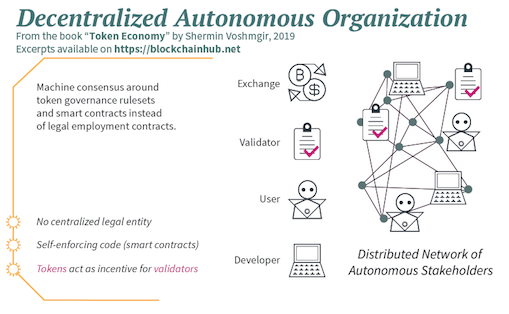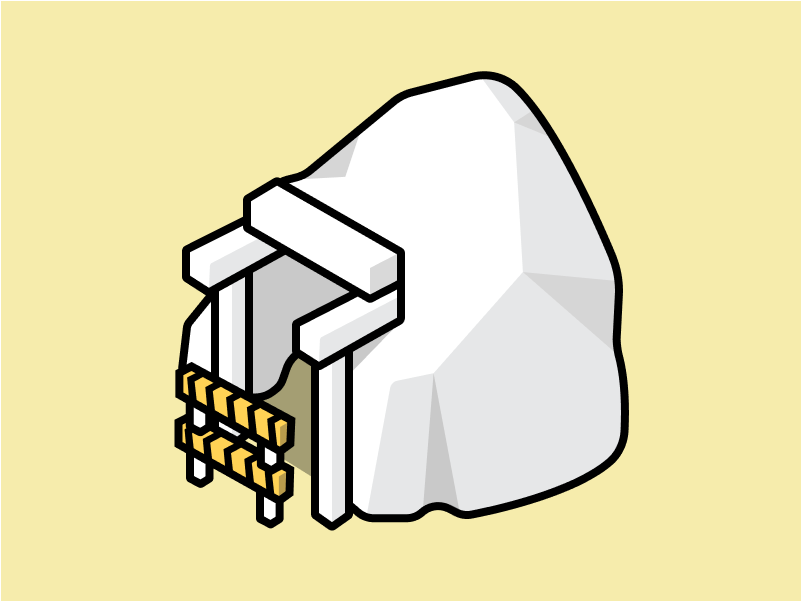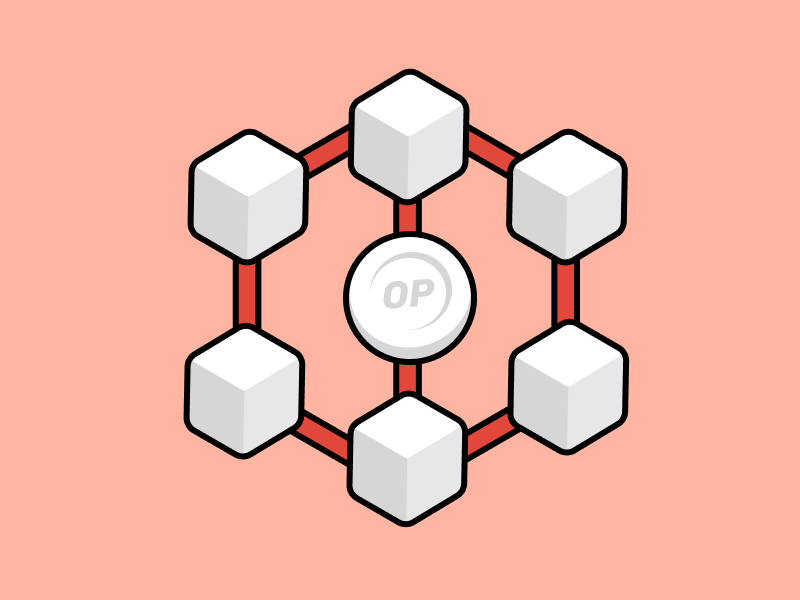Get to Know the Decentralized Autonomous Organization (DAO), How It Works and Its Implementation
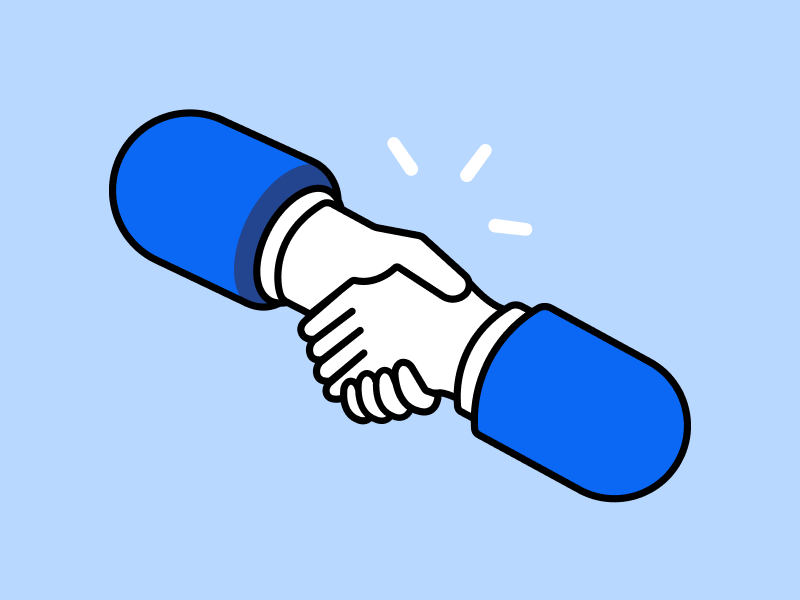
One of the breakthroughs in technology that has developed since the invention of cryptocurrency is DAO or Decentralized Autonomous Organizations.
DAO in principle is an organization that lives on the internet, and is owned and managed collectively by its members without any decision-making hierarchy. Unlike organizations or companies in general, every decision on a DAO is made based on voting by organizational members which is carried out automatically, transparently, and in a decentralized manner.
DAO can be used to run decentralized financial applications such as Uniswap, and can also be used for social and political missions. Then, what is a DAO, and what is an example of its application? We will discuss this further in this article.
Article Summary
- 💡 Decentralized Autonomous Organization (DAO) is an entity without a centralized leadership. DAO works without hierarchical management and is governed by a community organized within a certain framework of rules imposed on the blockchain.
- 🔗 DAO transactions and financial rules are recorded on blockchain. This eliminates the need to involve third parties in financial transactions, simplifying those transactions through smart contracts.
- 👛 One example of DAO application is to run fundraising and charity. Charitable organizations can accept membership and donations from anyone in the world and all can be run automatically and transparently.
- 📊 As of July 2022, there are more than 3.8 million governance token holders across nearly 4,800 DAO organizations, according to data on DeepDAO. Across the organization, there are more than US$8.8 billion held in DAO treasury, down US$1.2 billion from the previous month.
What is a DAO?
Have you ever imagined an organization that is run in a transparent and decentralized manner with all decisions made based on the voting of its members? With all the organization’s fund management can be monitored and based on approval by stakeholders? This can be done with a Decentralized Autonomous Organization (DAO).
A decentralized autonomous organization (DAO) is essentially an entity without a central leadership, where decisions are made from the ground up, and governed by a community organized within a specific framework of rules structured on the blockchain. With DAO, all organizational governance including fund management can be based on collective and transparent decisions, because everything is recorded in the blockchain for joint monitoring by members and stakeholders.
The difference with traditional organizations or businesses is that no one has full authority without the approval of the group. Decisions are governed by proposals and voting to ensure everyone in the organization has a say.
Thus, there is no longer a CEO who can authorize expenses of their own accord and it is not possible to manipulate the books. Everything is open and the rules around spending are entered into the DAO via its code.
💡 DAO (Decentralized Autonomous Organization) is an organization that is run by a set of rules coded in a computer program in a transparent manner, controlled by organizational members, and not governed by a centralized leadership. Because the rules are embedded into the code, the DAO does not need a manager or a person assigned to run the organization, eliminating any bureaucracy or hierarchies.
Differences of the Dao with Traditional Organizations
As explained earlier, unlike organizations or companies in general, every decision on a DAO is made based on voting by organizational members which is carried out automatically, transparently and in a decentralized manner. Here is a further explanation.
| DAO | Traditional Organization |
| Fully democratic. | Usually hierarchical. |
| A vote by members is required for any changes to be implemented. | Depending on the structure, changes can be made by one party or a vote may take place. |
| Votes are counted, and the results are implemented automatically without intermediaries. | If a vote occurs, the votes are counted internally and the results are done manually. |
| The services offered are handled automatically in a decentralized manner (eg distribution of philanthropic funds). | Requires human handling, or centrally controlled automation, prone to manipulation. |
| Organizational activities or decisions are open for the public. | Organizational activities or decisions are usually closed to the public. |
Sample DAO Application
1. Decentralized Finance

Some decentralized finance, such as Uniswap and AAVE, issue a government token which is used to give voting rights to their communities to run and develop projects. For example, anyone holding the UNI token can vote or delegate votes on a development proposal that could change the operation or infrastructure of the Uniswap protocol.
2. Charity and fundraising
You can accept memberships and donations from anyone in the world and the group behind the organization can decide how they want to spend donations. And all can be run automatically and transparently.
💡 One of the impacts of the Russia-Ukraine conflict is the use of the Decentralized Autonomous Organization (DAO) for humanitarian purposes. Russian punk activist band Pussy Riot even helped found a DAO that sells NFTs (non-fungible tokens) bearing the image of the Ukrainian flag. The NFT later sold for 6.75 million US dollars to help Ukraine.
How Do DAOs Work?
Decentralized applications like DAO are built with smart contracts. Smart contracts function to define and execute organizational rules, as well as treasury automatically. Once the contract is active on the blockchain, no one can change the rules except by voting. If anyone tries to do something that is not covered by the rules and logic in the code, then the attempt will fail.
And since the treasury is defined by smart contract as well, this means that no one can spend organization funds without group approval. DAO makes the organization run transparently. Members of the organization make decisions collectively, and the use of funds is done automatically and authorized when votes are approved.
After creating the rules that are recorded on the blockchain, the next step is to ensure there is funding for the organization’s operations and also determine the organization’s governance mechanism. This is usually achieved through token issuance, where the protocol sells tokens to raise funds and replenish the DAO treasury.
In exchange for funds awarded through token purchases, token holders are granted certain voting rights, which are usually proportional to the number of their token holdings. Once funding is complete, the DAO is ready to run.
Example of DAO Implementation and Governance Token
Referring to the workings and implementation of the governance token on Uniswap, the governance process begins at the Governance Forum where you can find proposals under consideration, gather information on community sentiment, and engage with the community. Below is the example.

Once a submitted proposal has successfully passed the proposal process and is ready for voting, it will appear on the Uniswap voting dashboard – where you can view all current and previous Uniswap proposals.
If the proposal is then active for voting, the words “active” will appear next to the proposal title. By clicking on a proposal you can find all the information, documentation and discussion needed for voters to make an informed decision.
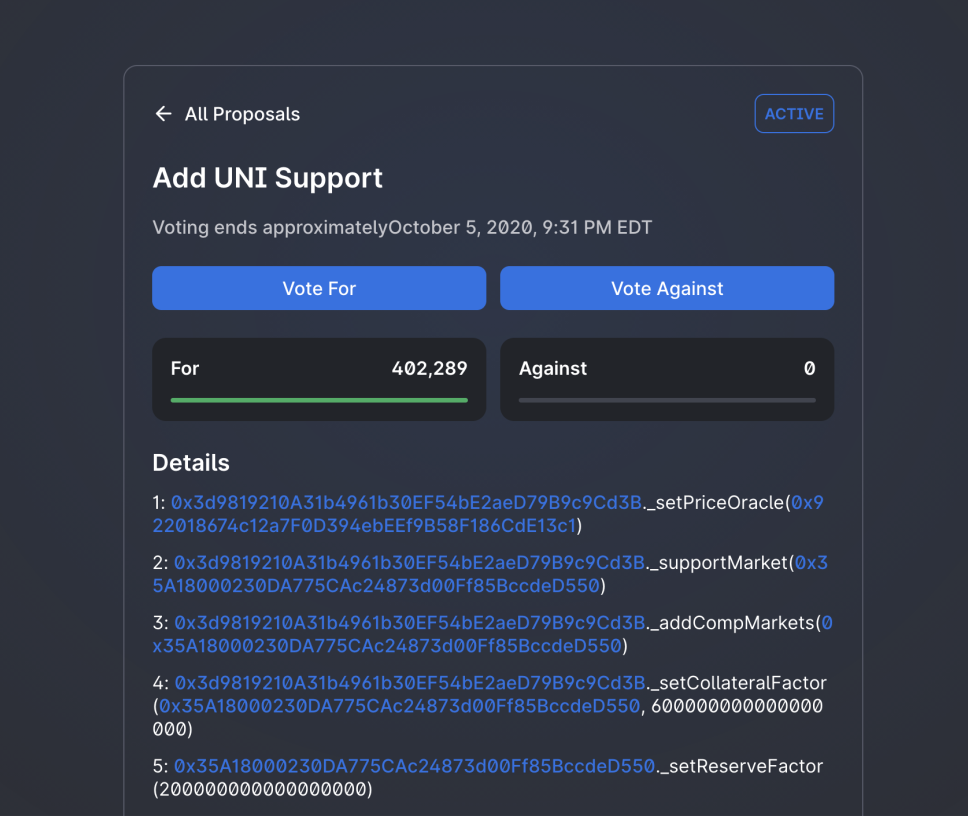
Once the proposal reaches the voting stage, it will represent tangible and executable code that will change the governance function of Uniswap or anything under its jurisdiction. Thus, it must be ensured that the code in the proposal has been properly checked and audited.
What drawbacks does DAO have?
As an internet-based organization, DAOs have several advantages over traditional organizations. These advantages include the minimum required trust between the two parties and also the absence of a hierarchical structure so that innovative ideas from the community can be considered by all members of the organization.
However, with these advantages and innovations it does not mean that DAO has no drawbacks.
- 👨💻 No authority figure. By not having a clear authority figure, or chain of command, decentralized organizations are slower to operate because decisions take longer to make.
- 💥 Possible disagreement. When the community strongly disagrees, it can split the organization in two.
- 🚧 No changes. In some DAO projects, those with the most tokens can take over or dominate decision-making. So governance looks very similar to traditional organizations.
References
- Decentralized autonomous organizations (DAOs), Ethereum.org, accessed on July 7, 2022
- Andrey Sergenkov, A Deep Dive Into How the Top 10 DAOs Work, Alexandria, accessed on July 7, 2022
- Cathy Hackl, What Are DAOs And Why You Should Pay Attention, Forbes, accessed on July 7, 2022
- Tokenized Networks: What is a DAO?, Blockchainhub Berlin, accessed on July 7, 2022
- Jacquelyn Melinek, As DAOs continue to blossom, here’s how to keep yours from wilting, accessed on July 12, 2022
- Organizations, DeepDao, accessed on July 12, 2022
Share
Related Article
See Assets in This Article
DEFI Price (24 Hours)
Market Capitalization
-
Global Volume (24 Hours)
-
Circulating Supply
-
